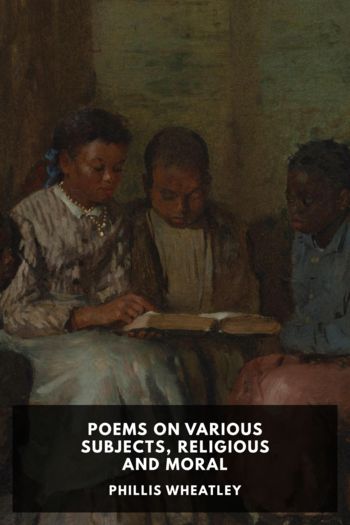Malaria and Rome: A History of Malaria in Ancient Italy, Robert Sallares [reading a book TXT] 📗

- Author: Robert Sallares
Book online «Malaria and Rome: A History of Malaria in Ancient Italy, Robert Sallares [reading a book TXT] 📗». Author Robert Sallares
³ Tommasi-Crudeli (1892: 86), cf. Levi (1945: 32, 74) on taxes and lies.
⁴ Pliny, Ep.2.17.3; the inscription CIL VI.8583, procuratoris Laurento ad elephantos (procurator [ cont. on p. 238]
Roman Campagna
237
35. Luigi Torelli’s Carta della malaria dell’Italia, completed in 1882. Geographical areas with P. falciparum malaria have dark shading, areas with only P. vivax malaria have light shading.
238
Roman Campagna
These meadows were natural meadows, not artificial ones, just as in Lazio in the nineteenth century, since the Roman agronomists in antiquity did not have any conception of the complicated crop rotation systems required for artificial meadows. In any case the forage crops of artificial meadow systems, such as lucerne, grew naturally in such a well-watered (in winter) environment. According to the early modern Roman agronomists stall feeding of stabled animals was disliked in Lazio because it was felt that animals tended to become infected with diseases if they were not allowed to roam freely. In 1813 33% of the total value of all agricultural production in Lazio came from animal husbandry. This demonstrates in quantitative terms the importance of animal husbandry to the agricultural economy, and explains why the élite in Rome throughout history took such an interest in it.⁵ In the sixth century
Procopius noted that the invading Gothic army chose to set up a camp at Regata near Terracina because the Goths observed that the lush Pontine plain was very suitable for feeding the horses of their cavalry.⁶
However, the agricultural system of Latium in antiquity was one in which animal husbandry was not integrated with arable farming. Pliny took transhumance for granted as the basic pattern of animal husbandry. This traditional system continued from antiquity up to and throughout the nineteenth century. It can be inferred that shepherds in antiquity were as vulnerable to infection with malaria when they came down from the mountains in late autumn as Marchiafava noted they were in the nineteenth century. The poem Culex in the Appendix Vergiliana tells a fable about a shepherd sleeping out in the countryside who was about to be attacked by a poisonous snake when he was woken up and saved by a mosquito biting him. The ungrateful shepherd killed the mosquito, which descended to the underworld and then reappeared to him in a for elephants at Laurentum) and Juvenal, Sat. 12.102–5 record the presence of elephants in this region.
⁵ Sallares (1991: 382–4) on meadows in antiquity; De Felice (1965: 38–40, 89–104) on meadows and animal husbandry in early modern Lazio; Gabba & Pasquinucci (1979) and Garnsey (1988 b) on antiquity.
⁶ Procopius, BG 1.11.1 (cf. 2.3.10–11 for the vicinity of Rome itself ). Nicolai (1800: 42–3) discussed eighteenth-century opinions on the location of Regata or Regeta. He noted Cluverius’ textual emendation of the name to Pineta and Olstenius’ emendation to Trajecta, but followed Corradini’s view that Regata was situated between Forum Appii and ad Medias along the Via Appia.
Roman Campagna
239
dream.⁷ This tale evidently lacks realism in more ways than one. It shows no awareness at all of the danger of mosquito bites and the link between mosquitoes and malaria. Nevertheless it is quite realistic in suggesting that being bitten by mosquitoes was an occupa-tional hazard for shepherds in the Roman Campagna.
However, the question of animal husbandry and agricultural systems has a wider significance in relation to malaria. It was noted earlier that species of mosquito may be anthropophilic, or zoophilic, or indifferent with regard to their choice of prey. In the Campagna Romana in the 1930s the important malaria vector species A. labranchiae certainly occurred inland but was most abundant along the coast, from Palidoro to Ardea. Its larvae seemed to require a certain degree of salinity in the water. Fluctuations in the size of populations of A. labranchiae were correlated with fluctuations in the frequency of malaria. Away from the coast in the 1930s the zoophilic A. typicus was commoner, while another zoophilic species, A. messeae, was very rare. Zoophilic female mosquitoes prefer cattle, but may also dine on pigs or horses instead. They are not so keen on sheep, whose woolly fleece provides protection from mosquito bites. Consequently a system of arable farming, using cattle to pull the plough, may sometimes deviate some species of mosquitoes away from humans towards cattle, especially if fodder crops alternate with cereals, increasing the number of animals that can be kept on the arable farm in summer, the crucial time of the year.⁸ This raises many important questions about the nature of ancient agriculture in Mediterranean-climate regions, such as the question of the prevalence or otherwise of fallow in arable farming, or that of the scale of cultivation of fodder crops, or of the extent to which animals were actually maintained permanently on farms.
These issues cannot be explored in detail





Comments (0)